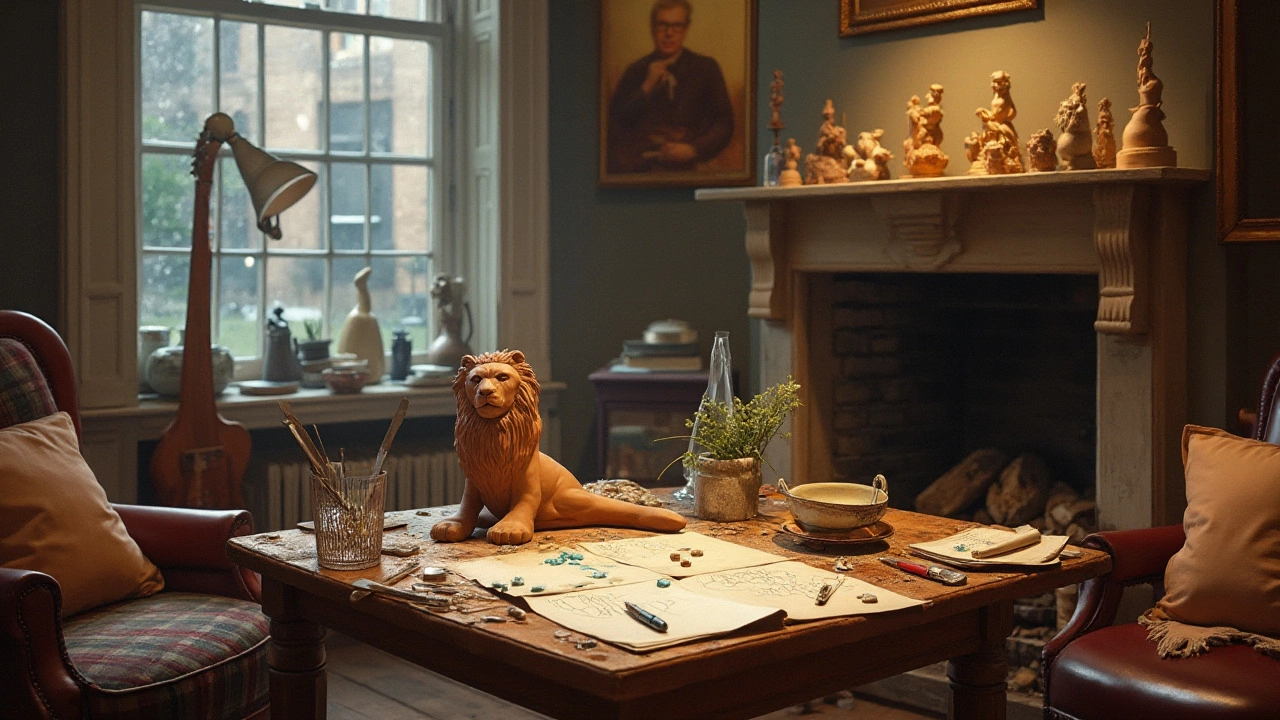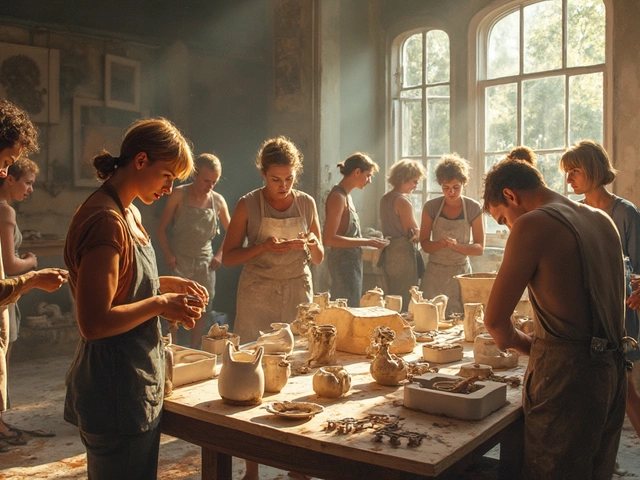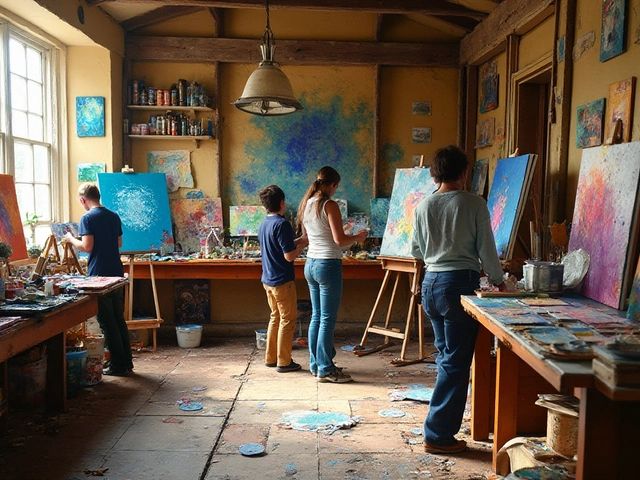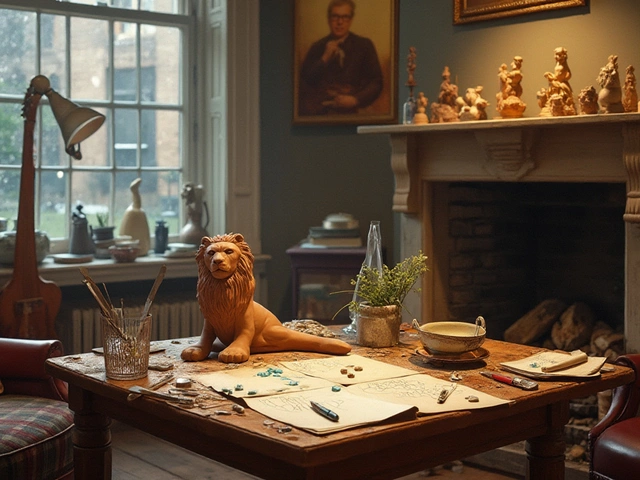Imagine being able to create a piece of art that you can touch, feel, and display in your own home. Sculpting is an art form that allows you to do just that. From clay to metal, the possibilities are endless, and it's a craft that anyone can enjoy, whether you're a beginner or a seasoned artist.
In this journey of shaping materials into forms that speak to your soul, we'll explore the essentials you need to get started. Understanding what tools and resources you'll need is the first step. Whether you're using your kitchen table or a dedicated workspace, there are plenty of ways to dive into this rewarding craft. Ready to unleash your inner artist? Let's get started on your sculpting adventure!
- Getting Started with Sculpting
- Choosing the Right Materials
- Exploring Simple Techniques
- Adding Finishing Touches
Getting Started with Sculpting
Diving into the world of sculpture art can be both exciting and overwhelming for a beginner. The first thing to remember is that every artist started somewhere, often with basic tools and a huge dose of curiosity. Beginning sculptors should feel reassured that perfection isn't the goal; expression and experimentation are. When starting out, it's important to familiarize yourself with the various materials you might use. Clay, stone, wood, and even metal—each medium has its own unique properties and challenges. Do a little research before deciding which material fits your initial vision, and keep in mind that clay is often the most approachable for those just stepping into the craft.
Establishing a suitable workspace is next on the list. This doesn't have to be anything fancy, particularly when you're just starting out. A sturdy table in a corner of your home can serve as your initial art studio. Important factors to consider include adequate lighting, ventilation, and most importantly, an area where you won't be concerned about making a mess. Sculpting is inherently tactile and can be a little messy, especially when working with home sculpture clay or plaster. Prepare yourself to embrace the mess—it often leads to the most unexpected creativity.
Every sculptor needs a collection of basic tools to shape their creations. Start simple with just a few essentials like a wire cutter for clay, some modeling tools, and a surface to work your magic. As your interest and skill level grow, your toolset can expand to include specialized chisels, rasps, and more. Do not underestimate the power of your hands; the most primitive and essential tools you possess. Hands allow for the intimate formation of shapes, imbuing each piece with a unique human touch.
Spending time at the very beginning to explore resources on DIY sculpture will be beneficial. Fortunately, we live in an era where learning resources abound. Utilize them by watching tutorials, reading art books, and even attending local workshops if possible. Many free and paid online platforms offer sculpting courses that can guide you through the process from start to finish. As one noteworthy artist aptly put it:
"Art is not what you see, but what you make others see."—Edgar DegasKeep in mind the limits of your current skills but don't let them constrain your artistic ambition.
Understanding the basic forms of design and composition is crucial as it lays the foundation for any great piece of art. During your initial attempts at sculpting, focus on grasping the fundamentals of shape, balance, and proportion. While textbooks offer theory, practice will grant you insight into how form and function intertwine in sculpture. If you're someone who enjoys data, a small table listing common clay types and their firing temperatures might prove helpful:
| Clay Type | Firing Temperature (°C) |
|---|---|
| Earthenware | 1000-1150 |
| Stoneware | 1200-1300 |
| Porcelain | 1260-1350 |
Starting with these fundamental considerations will set you on the right path. Remember, the journey of sculpting at home is every bit as important as the destination. Trust your instincts, embrace your flaws, and enjoy the process of turning raw materials into art that is truly your own.
Choosing the Right Materials
Diving into the world of sculpture art from home begins with selecting the right materials. This step is crucial, as the feel and finish of your project will greatly depend on your choices. Materials can range from classic options like clay and stone to more contemporary choices such as wood, metal, or even recycled objects. Each has its unique properties, and what you choose will depend on the experience you seek and the resources available.
Let's start with clay, one of the most popular materials for home sculptors. With its malleability, clay allows a freedom of expression unmatched by almost any other medium. It comes in several types, from air-dry clay to polymer clay, all of which have varying properties. For instance, polymer clay requires baking to harden, giving it durability. On the flip side, air-dry clay is perfect for beginners due to its easy drying process. Both types are readily available at craft stores or online, making them accessible to everyone. Experimenting with clay can be a wonderfully tactile and rewarding experience.
Stone, on the other hand, provides a timeless appeal. While it is more challenging to work with compared to clay, the results can be astonishingly beautiful and permanent. Marble, limestone, and sandstone are popular choices. Each type offers different textures and hardness levels, influencing both the tools you'll need and the techniques you'll employ. Remember, stone carving requires patience and precision. As Picasso famously put it, "Every block of stone has a statue inside it, and it's the task of the sculptor to discover it."
Contemporary artists might also consider using DIY sculpture materials such as plastics, metals, or even paper mache for their home creations. These materials push the boundaries of traditional sculpture, allowing for unique textures and shapes. Metals like aluminum and brass can be molded and welded into fantastic forms. Although requiring specific tools and skills, the results can be striking. For a beginner, paper mache is a playful and forgiving option, easily made from household materials like newspaper and glue, perfect for experimenting with large, lightweight forms.
Your choice might ultimately be driven by personal preference, cost, or the kind of aesthetic you aim to achieve. Even within the constraints of a home setting, innovation can thrive. Remember, some of the most remarkable sculptures have emerged from unlikely materials. As you explore home sculpture, let your imagination guide you, and don't shy away from combining different materials for more complex projects. The key to making a successful and satisfying sculpture is in choosing materials that complement your vision and capabilities.
Finally, here is a useful comparison table illustrating the basic characteristics of popular sculpting materials:
| Material | Accessibility | Difficulty | Tools Required |
|---|---|---|---|
| Clay | High | Easy | Simple Tools |
| Stone | Medium | Hard | Chisels, Abrasives |
| Metal | Low | Hard | Welding Equipment |
| Paper Mache | High | Easy | Basic Tools |
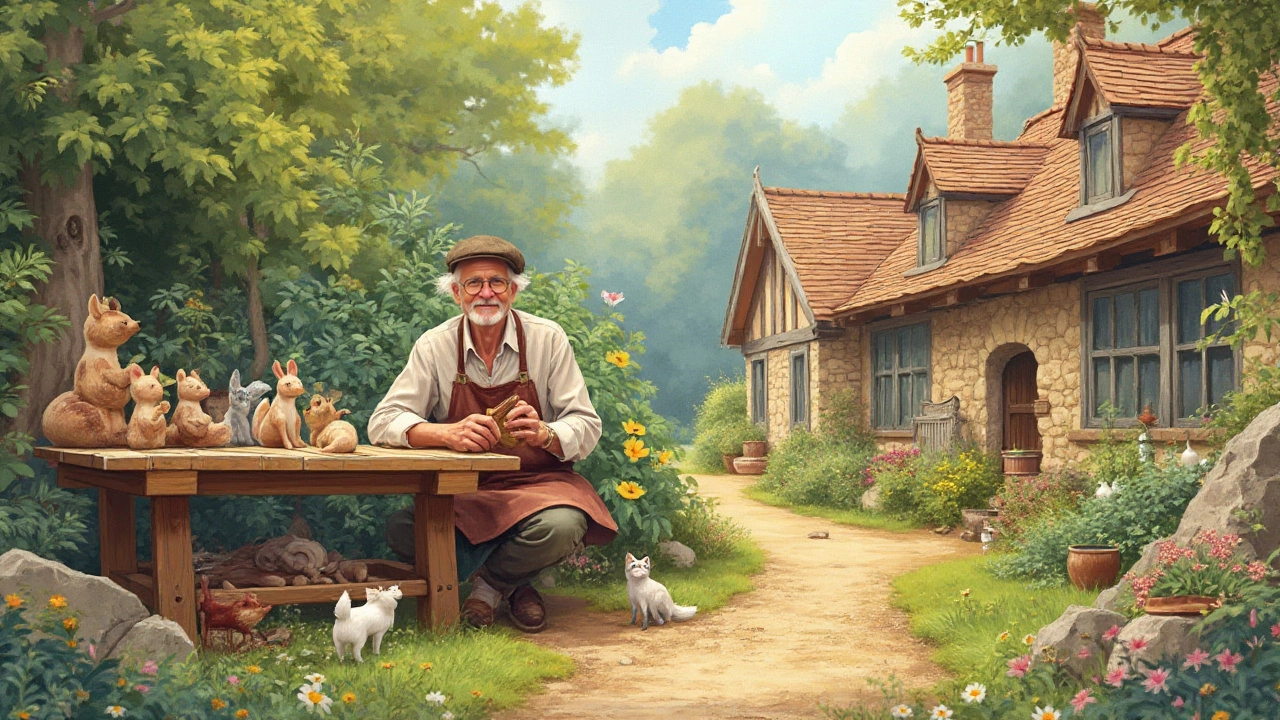
Exploring Simple Techniques
Creating your first sculpture at home doesn't have to be a daunting task. With a clear understanding of simple techniques, you can gradually build your confidence and skills. One of the simplest and most accessible starting points is clay sculpting. Clay is a forgiving material, allowing for easy adjustments, making it ideal for beginners. When first working with clay, it's important to keep it moist to maintain its malleability. A damp cloth or occasional spritz of water can help you achieve the desired texture. Approaching your sculpture with patience is key, and always remember that each touch of your hands adds character to your creation.
Many sculptors start by sketching their idea on paper before bringing it to life. This initial blueprint can serve as your guide, yet don't hesitate to let inspiration take over and steer you onto new paths as you work. Another technique to explore is wire armature building. Wire armatures provide a stable framework around which you can mold your sculpture, especially in larger pieces. Start with a simple wire frame, and refine it by bending and twisting the wire until your basic shape comes to life. Remember, this skeleton is essential for maintaining the integrity of your final piece.
Hand-built clay sculptures can be enhanced using tools made from household items. For instance, an old toothbrush can be repurposed as a stippling tool to add texture to your sculpture. Applying texture is not only a great way to elevate the visual interest of your piece but also provides layers of depth that the human eye will appreciate. In fact, the acclaimed sculptor Henry Moore once said, "To be an artist is to believe in life."
"Art should inspire life and life should inspire art," Moore believed.These words remind us to find inspiration in the simplest aspects of our lives, allowing it to influence our art profoundly.
Consider experimenting with subtractive sculpting, too, where material is carefully removed to reveal the form within. This technique often requires a bit more planning and precision, but it offers a unique creative challenge. Using tools such as chisels and rasps, you can carve away excess material to bring out details that might not have been evident initially. For those intrigued by mixed media, combining different materials, such as wood and clay, can produce a dynamic, visually appealing sculpture. This amalgamation invites contrasting textures and colors, adding layers of intrigue.
| Material | Cost | Ease of Use |
|---|---|---|
| Clay | Low | High |
| Wire | Low | Medium |
| Wood | Medium | Medium |
The beauty of sculpture art lies in its endless exploration of forms through various techniques, and your at-home experiments can be as simple or as complex as you wish. Take your time exploring different methods, and most importantly, enjoy the process. Remember, every detail, whether intentional or spontaneous, contributes to the uniqueness of your work. Embrace your mistakes—they are the stepping stones to mastery in the world of sculpture art. With practice, these simple techniques will become the foundation upon which your artistic journey will flourish.
Adding Finishing Touches
Once you've shaped and molded your sculpture into its desired form, it's time to polish it and give it that professional edge. The finishing touches are crucial as they can make your sculpture stand out, transforming it from a basic form into a gallery-worthy piece. First and foremost, you need to evaluate the surface. Whether it's clay, stone, or metal, smoothing out imperfections is key. Use fine-grit sandpaper for clay or stone, ensuring each curve maintains its intended aesthetic. If working with metal, a polish will not only smoothen but also bring out a shine that captures light in all the right ways.
Next, consider adding color. Depending on your base material, options include paints, glazes, or even natural patinas. When sculpting at home, a simple acrylic paint might suffice for clay pieces, while stone can benefit from staining techniques that enhance its natural hues. Metal may evolve over time, reacting with air to produce unique, rustic patterns; some artists embrace this, finding beauty in the DIY sculpture process's natural progression. For many, though, achieving the desired finish involves treating the sculpture with specific chemicals to control this natural reaction.
Detail work comes next. If your sculpture has intricate designs, they might get lost without proper attention. Here, precision tools can carve fine lines or add textures that make your piece come alive. Consider what story your sculpture tells and how subtle differences in surface detail can enhance that narrative. For those with a particular interest, adding embellishments, such as beads or metallic leaf, can offer another layer of artistic expression. This is particularly appealing in mixed-media art, where different materials converse through their distinct properties.
"The devil is in the details. Finish with precision, finish with intent." —Auguste Rodin, a belief echoed by many sculptors who understand the power of meticulous finishing work.
Finally, never underestimate the role of proper display and preservation. A piece of art only achieves its full potential when placed in an environment that complements it. Consider the lighting; how shadows and highlights play off your sculpture can offer viewers different perspectives and reveal hidden textures. Investing in a dedicated stand or case for delicate works protects them and enhances their beauty. Think of this as the last stroke on a painting; it is the element that brings the entire composition together. By taking care of your piece, you ensure sculpture art can be appreciated for years to come, not just as a solitary object but as part of the ambiance it inhabits.
